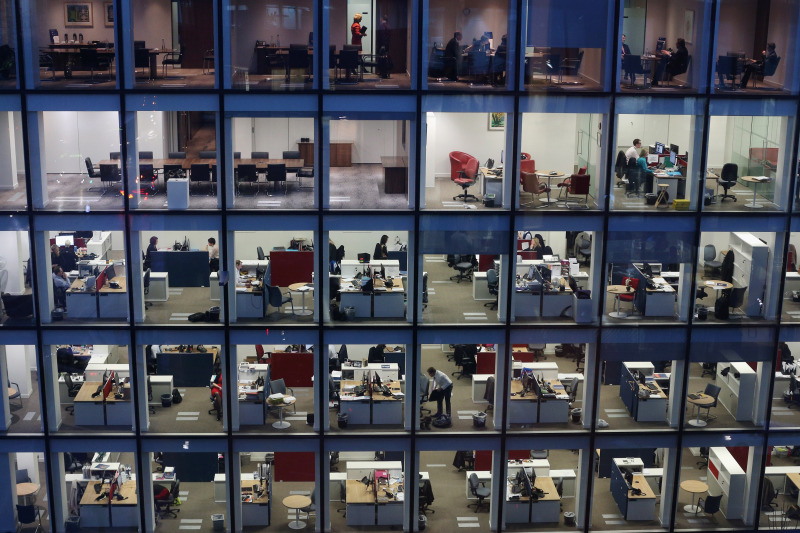If you're thinking that your gym workouts and the occasional 10-kilometer race are enough to fend off the ill effects of sitting, think again.
"Four large studies conducted in Australia and in the U.S. demonstrate that going to the gym at the end of the day sadly doesn't quite offset the apparent harm of sitting all day long," said Levine.
Instead, in addition to the gym workout, look for ways to incorporate movement throughout the day. This will help cut the body's peaks "in blood sugar and triglycerides and fat by half," said Levine.
2. Standing All Day Is Bad, Too
"The answer is not that sitting is bad, but that oversitting is bad. And that's equally true for standing," Hedge said.
While a standing desk is certainly a good step in reducing the amount of time you sit, standing eight hours a day has its own set of problems, including links to cardiovascular issues, varicose veins and lower back pain.
3. Variety Is Key
"The key here is to think about how do you build a more
dynamic working and living lifestyle for yourself so that you're never doing anything for too long a period of time," said Hedge.
Instead of standing or sitting all day, design your workday to be sure "you're mixing up your posture" and using different groups of muscles throughout the day.
One way to do this is to determine which tasks require sitting and which do not. Perhaps you can brainstorm while you walk, clean your desk while standing, sit to write reports and stand for phone calls.
And definitely utilize mobile technologies. They can allow you to "do the work that you need to do, but not to have to do it in any one location," said Hedge.
4. Remember the 3 S's
Sit, Stand, Stretch. Those are the actions that compose Hedge's "ideal work pattern." His prescription calls for 20 minutes of sitting, then eight minutes of standing, followed by two minutes of moving and stretching.
5. Take a Break
Levine said that there is more than 20 years of research supporting the health benefits of taking breaks. A break once an hour is good, but "the optimal would be every 20 to 30 minutes," he said. And don't simply mentally switch gears. "Get up, move around and stretch."
6. Remember Good Posture
Standing desks are a good development as long as one is standing correctly. "Our research shows that when people start to get tired they begin to lean on the desk," said Hedge. It's important to maintain good neck and wrist posture. Resources about good workplace posture and setting up a healthy work station can be found on the Cornell University Ergonomics Web.
7. Movement Begets Movement
"People who tend to sit more during their workday actually sit more during their leisure time, too," said Levine. That fact becomes all the more important if desk workers are going home and watching TV on the couch. Life expectancy decreases by 22 minutes for every hour spent watching television, according to Levine.
As bad as the news is for people with sedentary jobs, there is hope.
"There is huge variation in the amount of activity or sitting that people do," Levine said. "Some people are naturally more active or have learned to be more active than others."
Perhaps those are the people who always volunteer to make the coffee runs.

